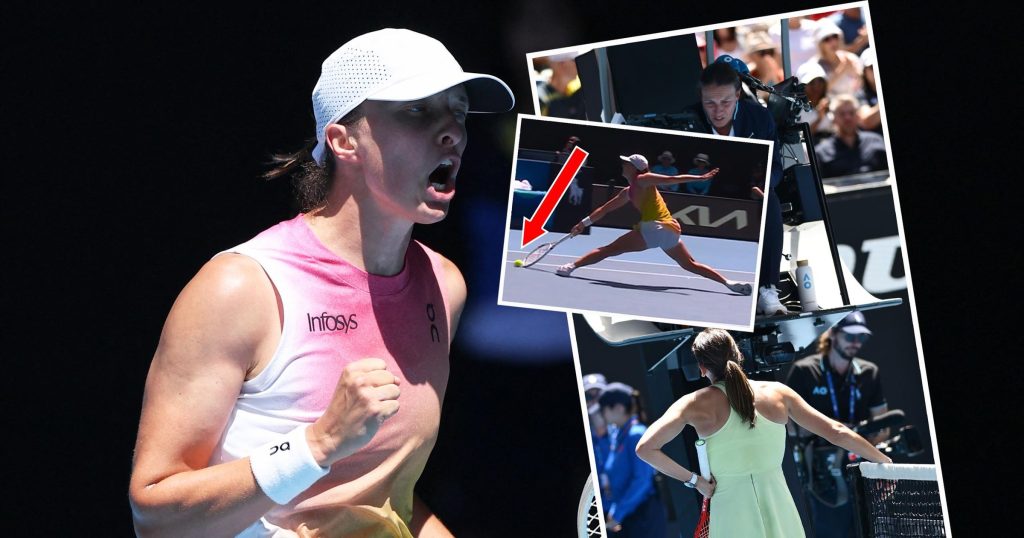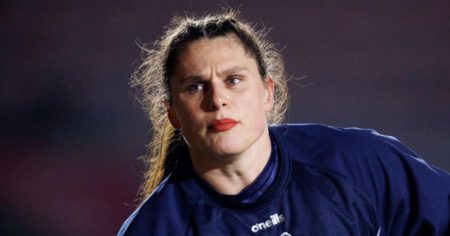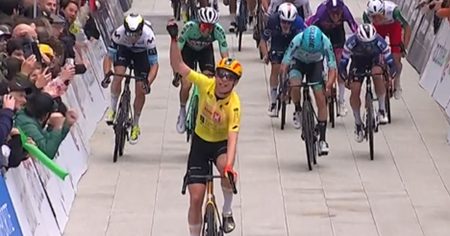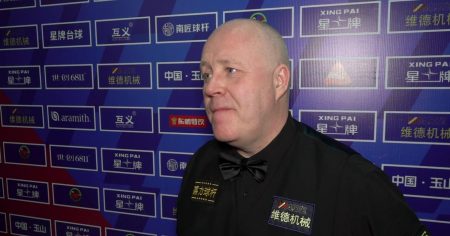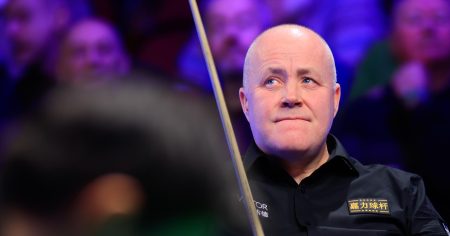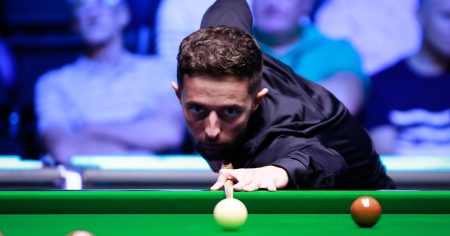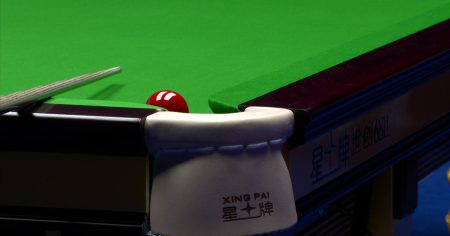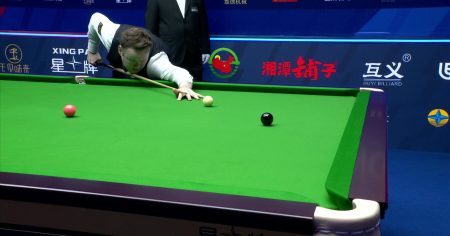The quarter-final clash between Iga Swiatek and Emma Navarro at the Australian Open was marred by a controversial double-bounce incident that left Navarro bewildered and questioning the rules of the game. With Swiatek leading a set and 2-2 in the second, a delicate drop shot by Navarro forced Swiatek to scramble forward, scooping the ball back over the net. Navarro hurried forward to make the return, setting up Swiatek for a seemingly easy put-away. However, as the ball whizzed past Navarro, the American raised her arms in disbelief, convinced that Swiatek had failed to prevent the ball from bouncing twice on her side of the court.
The chair umpire, Eva Asderaki-Moore, appeared to have missed the double bounce, leading to a brief exchange between Navarro and the umpire at the net. Navarro, contesting the point, ultimately conceded and returned to her chair for the changeover. The incident sparked confusion amongst commentators and spectators alike, with many questioning whether Navarro had been unfairly penalized at a crucial juncture in the match. The controversial call occurred on game point, allowing Swiatek to hold serve and maintain momentum.
Commentators Simon Reed and Jo Durie expressed their uncertainty regarding the double bounce, initially believing Swiatek had indeed hit the ball after a double bounce. They discussed the possibility of utilizing the Video Assistant Referee (VAR) system, a technology designed to review contentious calls. However, they were perplexed as to why the umpire hadn’t used it and why Navarro hadn’t explicitly challenged the call. The lack of a challenge, they speculated, might have been the reason for the umpire’s inaction. Reed, upon reviewing the replay, revised his initial assessment, concluding that the ball had not bounced twice. He lamented the missed call, emphasizing its significance given Navarro’s attempts to regain footing in the match.
The ambiguity surrounding the incident highlighted the complexities of the rules governing double-bounce situations. While the rules permit players to challenge such incidents and request a video review, Navarro’s immediate continuation of play seemingly precluded her from seeking a review. This interpretation, later confirmed by Navarro in her post-match press conference, revealed a critical nuance in the application of the rules. She explained that she had continued playing the point, effectively forfeiting her right to challenge the call. Had she stopped play immediately, she could have requested a review.
Navarro expressed her frustration with the ruling, arguing that players should be able to review such incidents even after playing the subsequent shot. The speed of the game, she explained, often makes it difficult to immediately discern a double bounce, especially when focused on returning the ball. She believed the rules should prioritize accuracy and fairness, allowing players the opportunity to review the incident even if they instinctively continue play. The incident brought to light the ongoing discussion regarding the use of technology in tennis and the potential for refining the rules to ensure accurate and fair officiating.
The controversial call proved to be a turning point in the match. Navarro, after having a strong start in the second set, lost momentum and failed to win another game. Swiatek capitalized on the opportunity, closing out the match 6-1, 6-2 and advancing to the semi-finals. The incident, while ultimately not decisive given Swiatek’s commanding performance, underscores the importance of clear and consistently applied rules, especially in the high-stakes environment of professional tennis. Navarro’s questions regarding the use of technology and the leeway afforded to players in challenging calls raise important considerations for the future development of the sport’s officiating practices.




